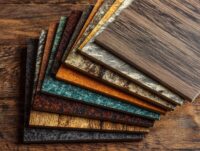- Home
- Articles
- Architectural Portfolio
- Architectral Presentation
- Inspirational Stories
- Architecture News
- Visualization
- BIM Industry
- Facade Design
- Parametric Design
- Career
- Landscape Architecture
- Construction
- Artificial Intelligence
- Sketching
- Design Softwares
- Diagrams
- Writing
- Architectural Tips
- Sustainability
- Courses
- Concept
- Technology
- History & Heritage
- Future of Architecture
- Guides & How-To
- Art & Culture
- Projects
- Interior Design
- Competitions
- Jobs
- Store
- Tools
- More
- Home
- Articles
- Architectural Portfolio
- Architectral Presentation
- Inspirational Stories
- Architecture News
- Visualization
- BIM Industry
- Facade Design
- Parametric Design
- Career
- Landscape Architecture
- Construction
- Artificial Intelligence
- Sketching
- Design Softwares
- Diagrams
- Writing
- Architectural Tips
- Sustainability
- Courses
- Concept
- Technology
- History & Heritage
- Future of Architecture
- Guides & How-To
- Art & Culture
- Projects
- Interior Design
- Competitions
- Jobs
- Store
- Tools
- More
How Windows and Doors are Changing the Face of Home Design?

Windows and doors are more than mere entryways; they are transformative elements in home design that mirror the evolution of architecture and interior aesthetics. As the nexus between the outside world and our personal living spaces, these fixtures are becoming increasingly innovative — incorporating materials, technology, and design practices that elevate both functionality and visual impact.
The modern homeowner now demands solutions that not only enhance the beauty and value of their space but also contribute to energy efficiency and environmental sustainability. This growing trend is shaping how architects and designers approach the look and feel of homes, merging indoor comfort with an immersive connection to the outdoor environment.

Table of Contents
ToggleIntelligent Glass Technologies
Smart glass technology is revolutionizing window design by allowing homeowners to control the opacity of their windows with the simple press of a button. This innovation not only increases privacy but also has the potential to improve energy efficiency by modulating the amount of light and heat entering the home.
Advances in intelligent glass are leading to a reduction in energy costs as these windows can adapt to weather conditions. On sunny days, they can automatically become tinted to reduce heat absorption, while on colder days, they can clear up to permit more sunlight and warmth into the space.
Smart glass technology aligns with the sustainability goals of modern home design. By optimizing natural light usage and enhancing thermal regulation, intelligent windows contribute to a home’s overall energy efficiency, reducing the reliance on artificial climate control.
The Aesthetic Appeal of Modern Design
Contemporary window and door designs emphasize clean lines and minimal frames, allowing for more expansive glass surfaces that create unobstructed views and flood interior spaces with natural light, fostering a connection between inside and outside.
Homeowners can now tailor the design of windows and doors to their style like never before, choosing from a variety of materials, finishes, and colors. his level of customization enables windows and steel doors to become distinctive features that reflect the homeowner’s personality and design aesthetics. With a steel framed window manufacturer, for example, homeowners can achieve a sleek and industrial look for their home’s exterior or interior. On the other hand, choosing timber-framed windows can add warmth and natural texture to a space.
Modern technology has allowed for the development of larger glass panels with stronger frames, making it possible to create dramatic floor-to-ceiling windows that provide breathtaking views and a feeling of expansiveness. This trend towards bigger windows also blurs the lines between indoor and outdoor living spaces, allowing homeowners to enjoy the beauty of nature from the comfort of their own homes.
Florida residents may easily find companies offering custom designed windows near Englewood, Florida, and explore a range of options that cater to both aesthetic preferences and functional needs. These tailored solutions ensure that homes can maximize natural light while maintaining energy efficiency and durability in coastal climates.
Architectural Integration
Innovative door systems, such as wide sliding or folding glass walls, provide a seamless transition between the indoors and the great outdoors. Architects often use these features to blur the lines, opening up homes to nature and inviting the outside in. Modern materials offer the benefit of increased durability and energy efficiency, but they can also be designed to reflect historical and regional architectural styles. This dual approach allows for the integration of contemporary functionality while respecting traditional aesthetics.
Today’s windows and doors must meet stringent structural requirements to withstand harsh weather and provide security. Architects seamlessly incorporate this need for durability into their designs without compromising on stylish, sleek lines and overall beauty. In addition, with the use of sustainable materials such as recycled steel and timber, windows and doors can be both aesthetically pleasing and environmentally friendly.
The Innovation of Door and Window Hardware
Cutting-edge locks and hardware are being integrated into window and door designs, offering homeowners state-of-the-art security features that are both effective and aesthetically pleasing, complementing modern home design instead of detracting from it. Hardware is no longer just utilitarian; it’s part of the overall design. From hinges to handles, each element is crafted to enhance both the function and the visual appeal of windows and doors, merging practicality with elegance.
As homes become smarter, so do their components. Window and door hardware are increasingly designed to be compatible with smart home systems, allowing homeowners to control access, monitor security, and even integrate them with other home automation features remotely.
Enhancing Energy Efficiency
Innovative materials and design approaches are improving the insulation properties of windows and doors, contributing to the thermal efficiency of homes. This means that less energy is required to heat or cool the space, leading to lower utility bills and a smaller carbon footprint. Effective sealing is crucial to preventing air leaks, which can have a significant impact on a home’s energy efficiency. Modern weather stripping and seals offer advanced protection against the elements, ensuring that indoor comfort is maintained without unnecessary energy expenditure.
Triple glazing is becoming a new standard in regions with extreme weather variations, offering superior insulation compared to double-glazed options.Modern homes are increasingly incorporating wholesale secondary glazing as an affordable measure to boost energy efficiency, reduce heating costs, and create a cozier living space. This upgrade can dramatically improve a home’s energy efficiency and comfort levels alike. Additionally, manufacturers are now offering low-emissivity (low-e) coatings for windows and doors that reflect heat to keep homes cooler in hot climates and retain heat in colder regions. These coatings also block harmful UV rays, protecting interior furnishings from fading.
Sustainable Materials and Practices
The shift towards sustainable production practices in the manufacture of windows and doors is gaining momentum. Manufacturers are focusing on reducing their environmental impact by adopting greener materials and processes, contributing to a more sustainable construction industry. Sustainability in window and door design is also about the lifecycle of the materials used.
More companies are employing recyclable materials that can be repurposed at the end of their lifespan, significantly reducing waste. Incorporating passive solar design principles into window and door placement and materials can boost a home’s energy efficiency. Properly designed homes take advantage of the sun’s natural energy for heating and lighting, reducing reliance on mechanical systems. Homeowners are also prioritizing eco-conscious upgrades that enhance both sustainability and performance. One such solution is the use of precision-fit uPVC windows, which offer excellent thermal insulation and require minimal maintenance due to their durable construction. These windows not only reduce energy consumption but also contribute to a quieter and more comfortable indoor environment.

Windows and doors no longer serve as mere functional elements of a home. They are pivotal in redefining the aesthetic and environmental considerations of modern living spaces. As we witness innovation in materials, technology, and design, these elements increasingly embody a synthesis of beauty, efficiency, and sustainability.
Today’s architects and homeowners are leveraging these advancements to create homes that are not only architecturally stunning but also comfortable, secure, and gentle on the environment. As the industry continues to evolve, it is clear that the role of windows and doors will remain at the forefront of design innovation, shaping the way we live and interact with our surroundings for generations to come.
illustrarch is your daily dose of architecture. Leading community designed for all lovers of illustration and #drawing.
Submit your architectural projects
Follow these steps for submission your project. Submission FormLatest Posts
Shipping Containers as Functional Infrastructure on Construction Sites
Construction sites are temporary by definition, yet the systems that support them...
Understanding Site Safety Footwear in Architectural Practice
Architecture is often discussed through drawings, models, and finished buildings, yet a...
General Arrangement Drawings in Architecture: The Backbone of Clear Design Communication
General Arrangement Drawings explained: what they are, when to use them, how...
The Ultimate Guide to Fencing in North Dakota: Choosing the Best Fence for Your Property
Watching a chain link fence twist in 70 mph winds near Minot...












Leave a comment